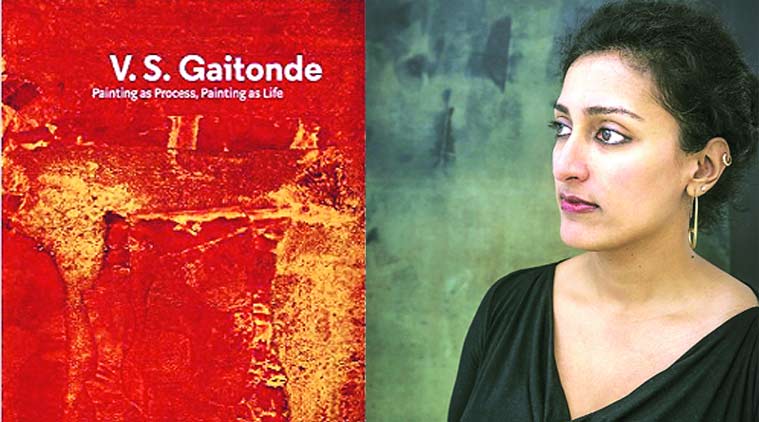Stay updated with the latest - Click here to follow us on Instagram
Between the Lines
London-based art historian Sandhini Poddar on her new book on artist V S Gaitonde.
 Sandhini Poddar; her book titled Painting in Process, Painting As Life.
Sandhini Poddar; her book titled Painting in Process, Painting As Life.
London-based art historian and Guggenheim Museum’s adjunct curator Sandhini Poddar is back in the spotlight after curating the much applauded and talked about retrospective of V S Gaitonde at New York’s Solomon R Guggenheim Museum held last year. Her new book on the artist, Painting as a Process, Painting as Life, was launched in the Capital at Vadehra Art Gallery on Wednesday evening. Pallavi Chattopadhyay spoke to her to get an insight into the reclusive yet radical modern painter. Excerpts:
What factors culminated in the compilation of the book?
I have been following Gaitonde’s work for many years. I was frustrated that when one goes searching for bibliographical information, there isn’t much available. There is an immense dearth of information and whatever little is published is outdated and erroneous. After suggesting the idea of the retrospective in 2011, I was equally interested in doing a book on him. There was a need to understand his thought process, his research and his body of work. Despite receiving immense support after his death, there was no scholarship for further research and interest. The book is a vehicle and platform demanding an urgent need to work on serious scholarships on the artist so that the people can refer to them.
What inspired you to come up with the idea for the book?
I wanted to do it for 15 years. When one is looking at spending five years, your subject has to be someone who inspires you for a long period. My encounter with Gaitonde’s work left me speechless every time and propelled me to encounter him again and again. He had a great sense of integrity as a human being. For me, all the 45 paintings and works on paper featured in the retrospective are equally important.
Will the retrospective be brought to India soon?
The second chapter of the retrospective involves it being showcased at the Peggy Guggenheim Collection in Venice, October onwards. This is part of the attempt to extend the audience beyond America. The third chapter includes it being brought to India. Unfortunately, this will not be as a part of the retrospective and we will try to see creative ways of re-imagining it, using the support of local vendors. The first tour never happened in India, because of limitations in the country, bringing in concerns which can be alleviated by curating it in a different way. As compared to several international institutions, India still doesn’t have the same standards when it comes to art handling issues, especially of fragile works, security, lighting and customs.
What was the most challenging aspect of putting the book together?
I spent a year-and-a-half tracking down all his works from across the world. Works from the ’50s had deteriorated. Only a few paintings existed in good condition, which could be documented for the book but couldn’t travel. The book was hard to accomplish. I had two assistants helping me, one in New York and the other in Mumbai. Also, for the exhibition history, there were no reliable sources. We wanted to bring out the book so that any scholar or critic interested could have easy access.
Were there any unique discoveries during your research?
From the ’50s to the late ’90s, the artist was dedicated to art on a day-to-day basis. I discovered insights into his studio practices, his meditative relationship to art and his process. His friends such as Krishen Khanna, Ram Kumar and Jatin Das, helped unfold and understand his psychology, his motivation, the larger influences of Japanese calligraphy and medieval Chinese paintings, Zen Buddhism, personalised human relationships and his intellectual framework.







